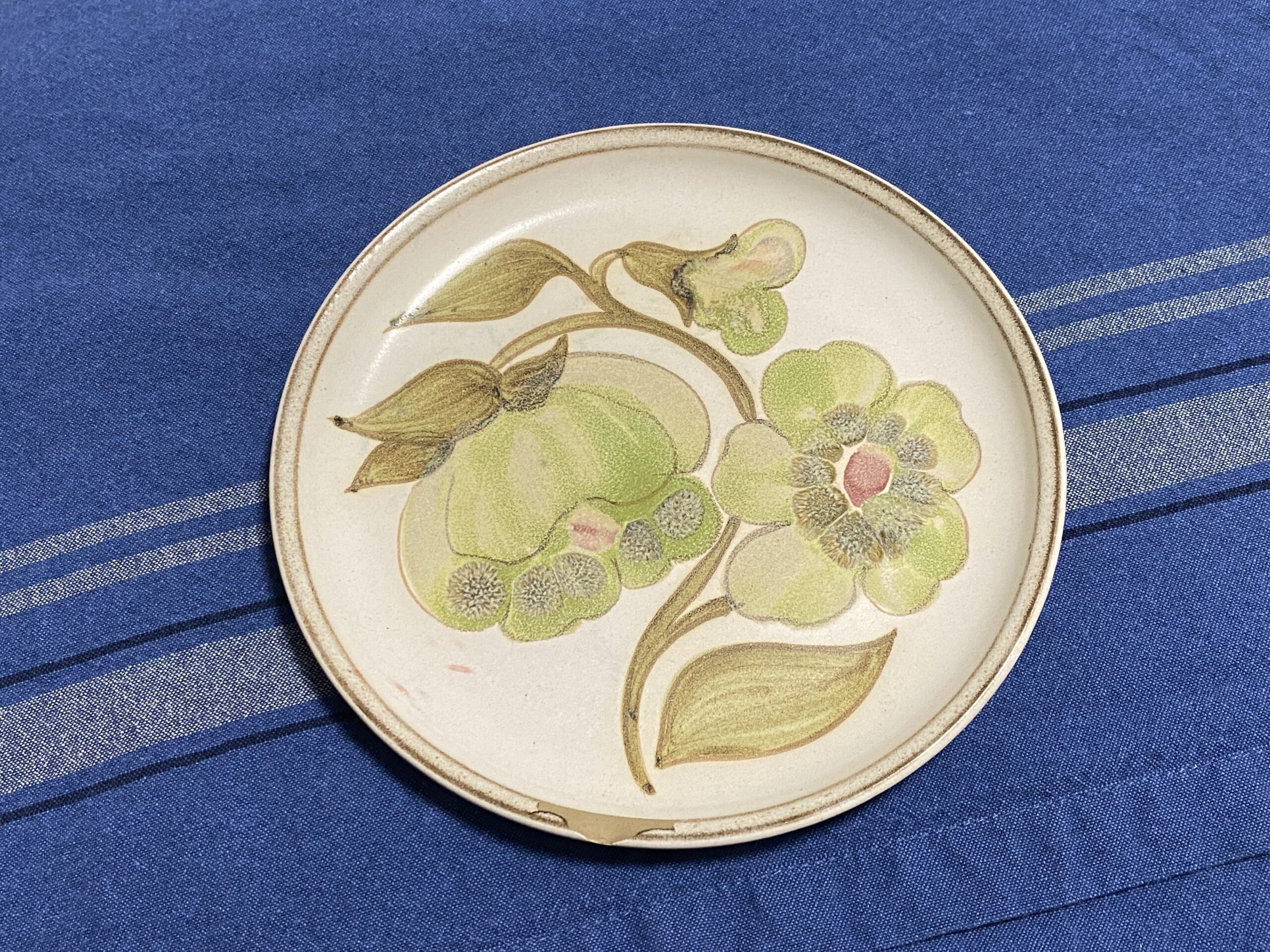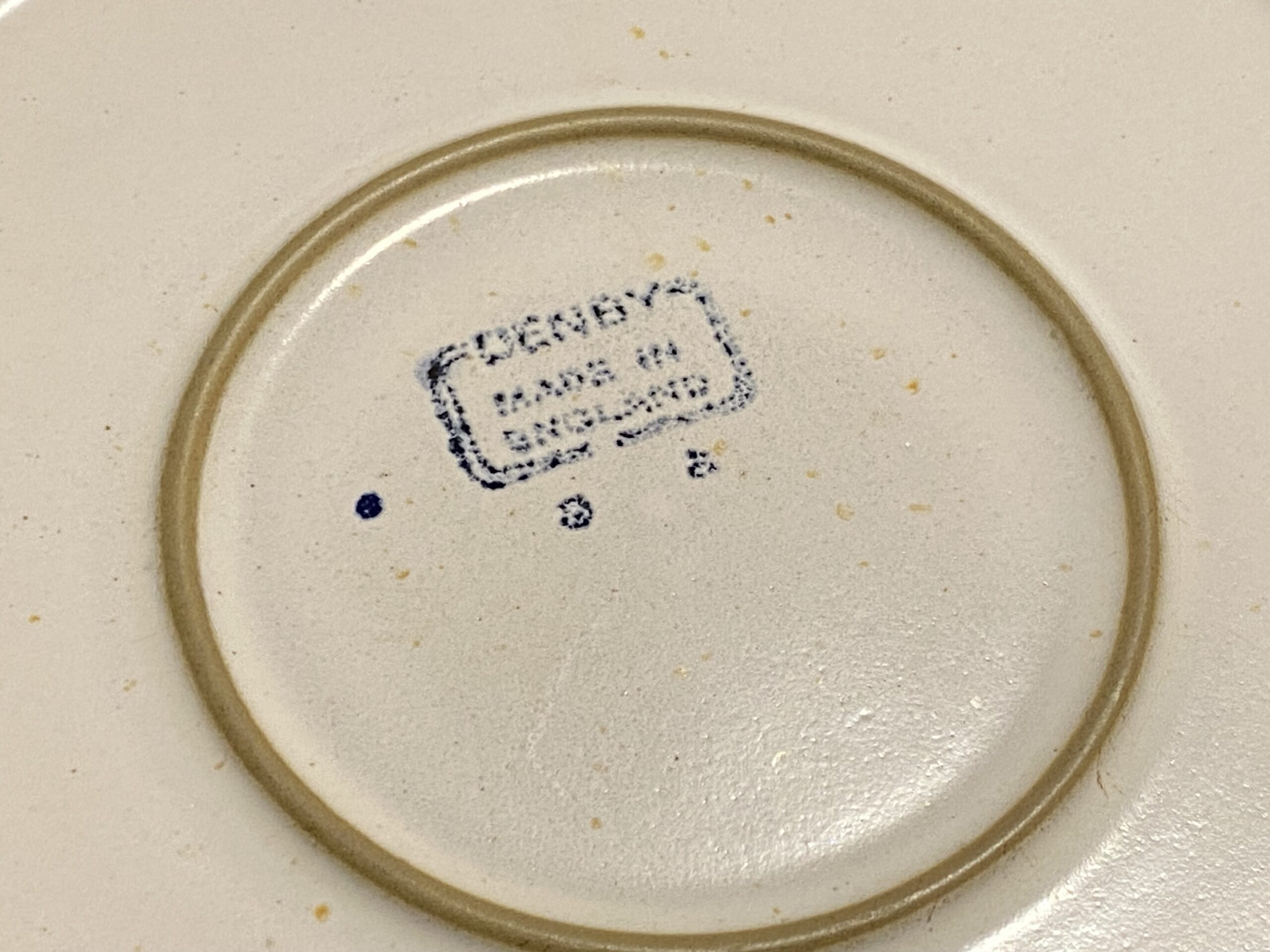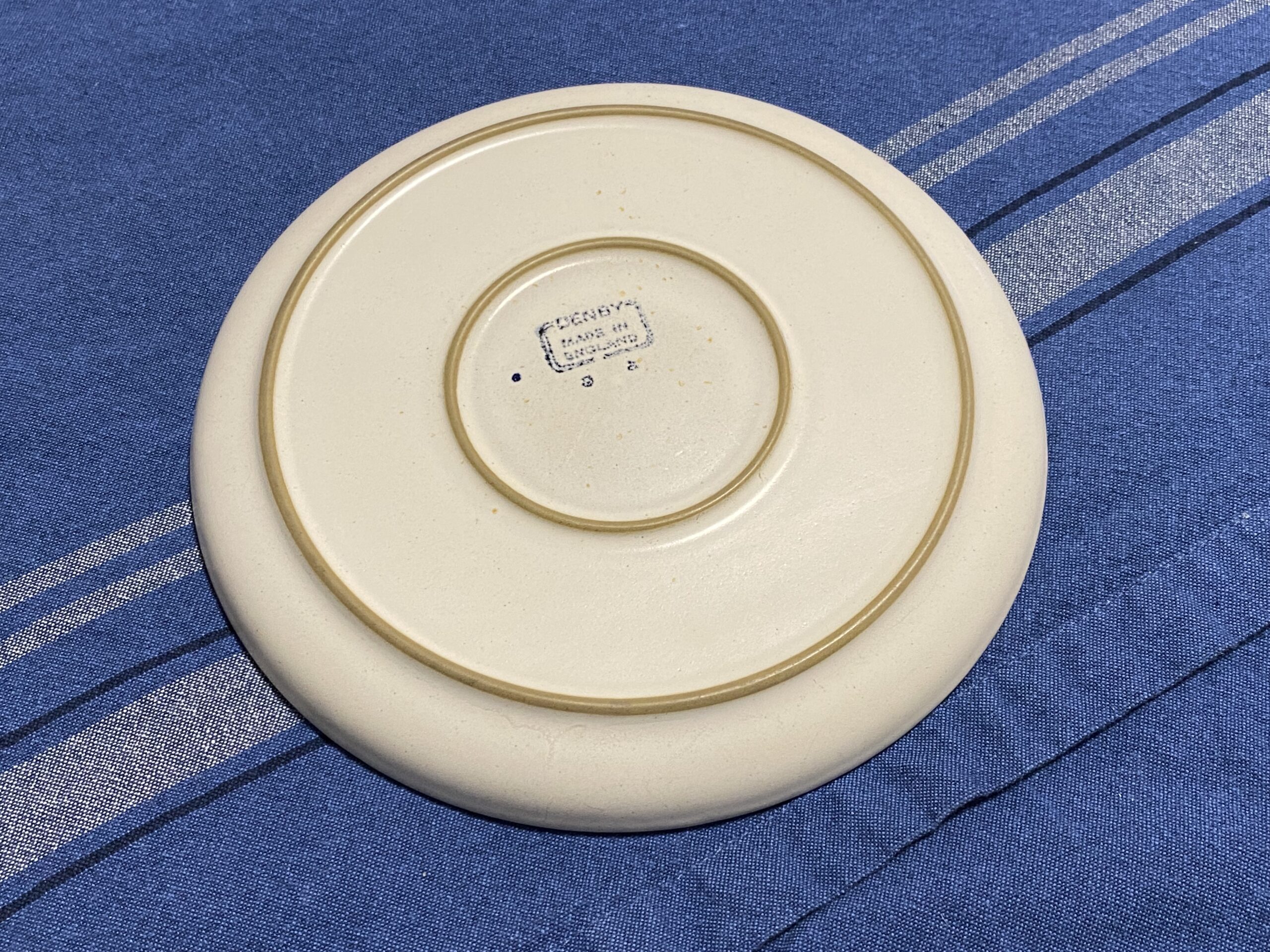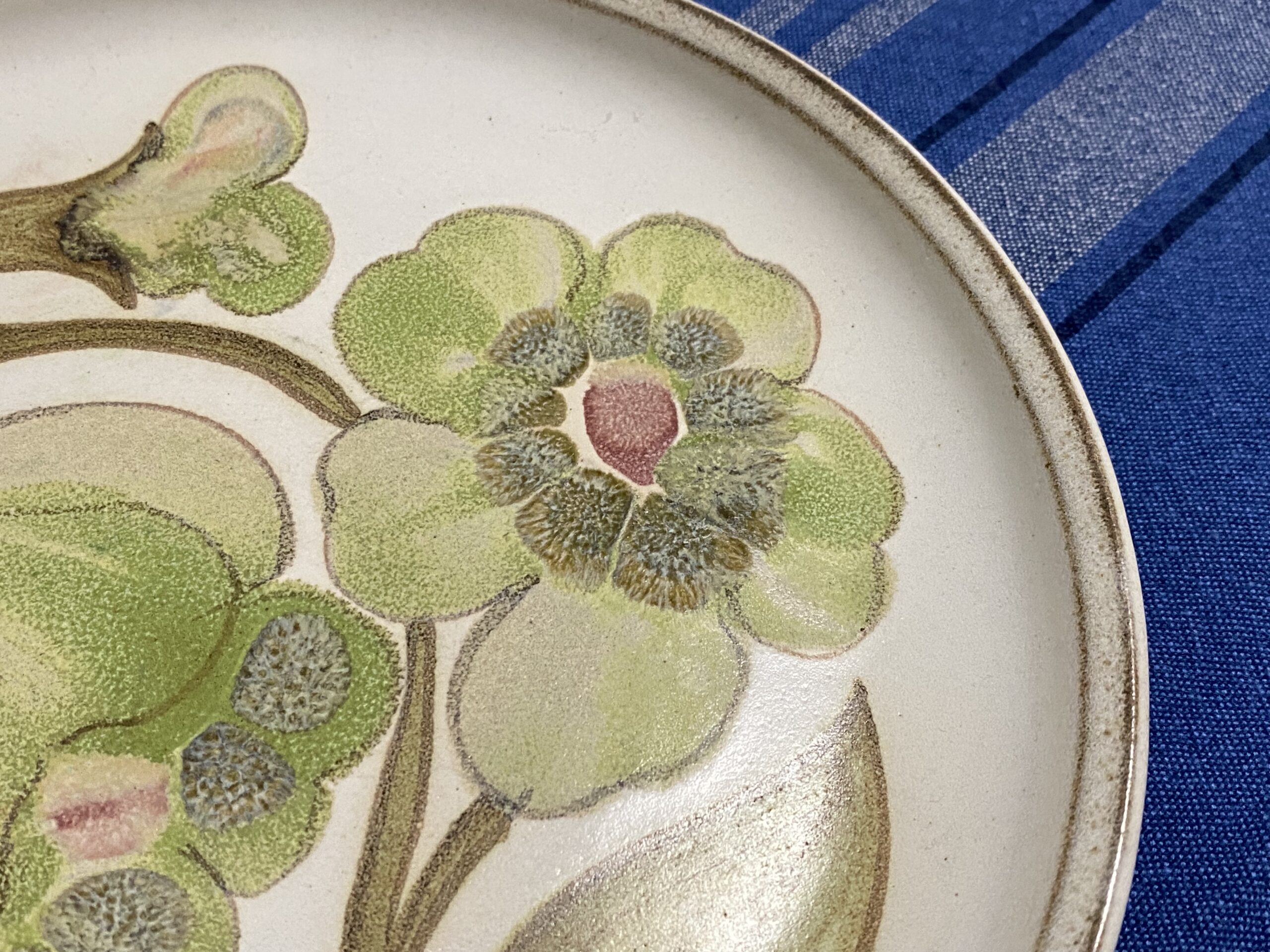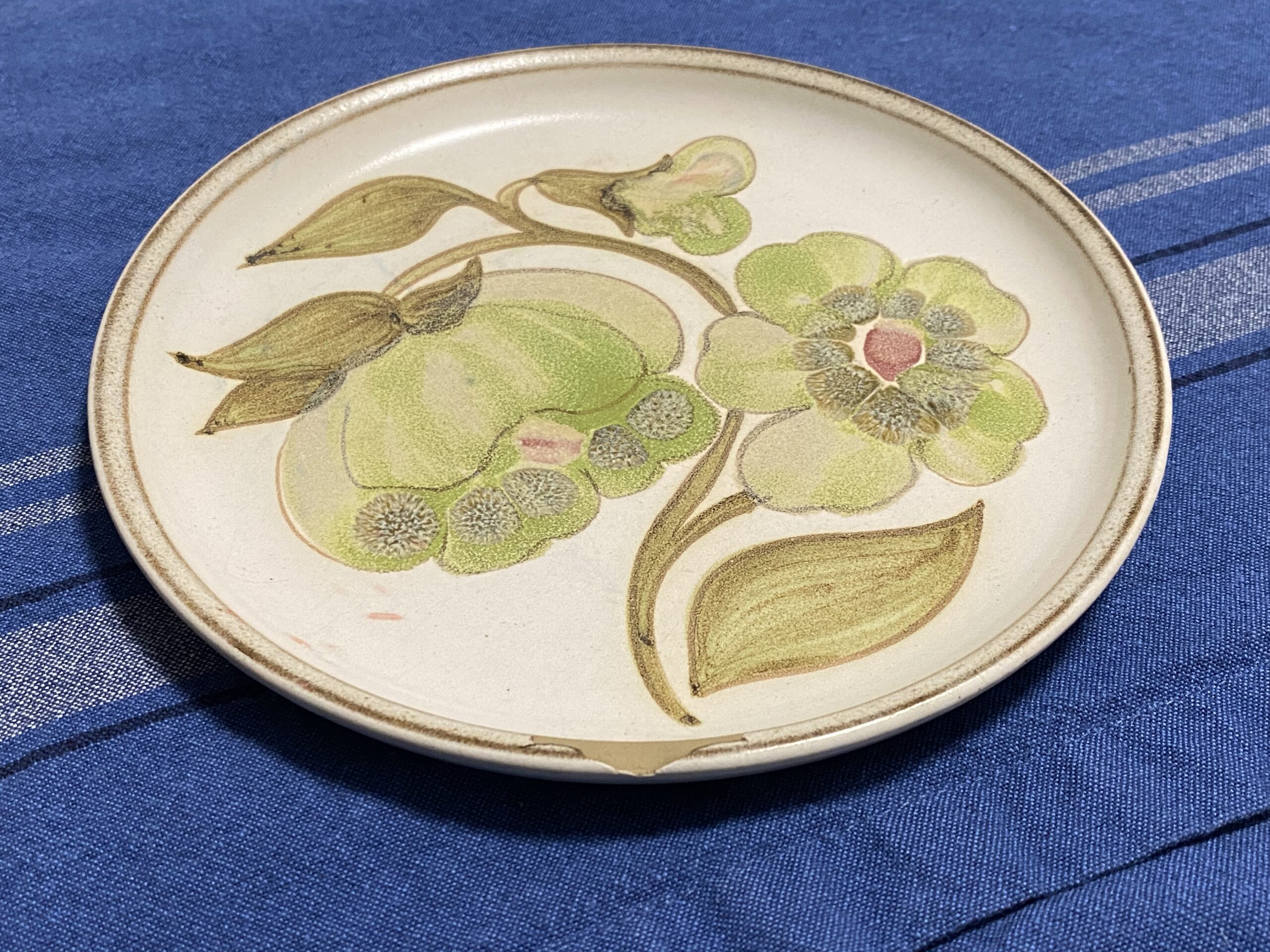Green Floral Denby Pattern, Made in England (sent in by Claire in MO): 346 ppm Lead on the food surface
For those new to this website:
Tamara Rubin is a multiple-Federal-award-winning independent advocate for childhood Lead-poisoning prevention and consumer goods safety, and a documentary filmmaker. She is also a mother of Lead-poisoned children (two of her sons were acutely Lead-poisoned in 2005). Since 2009, Tamara has been using XRF technology (a scientific method used by the U.S. Consumer Product Safety Commission) to test consumer goods for toxicants (specifically heavy metals — including Lead, Cadmium, Mercury, Antimony, and Arsenic). All test results reported on this website are science-based, accurate, and replicable. Items are tested multiple times to confirm the test results for each component tested. Tamara’s work was featured in Consumer Reports Magazine in February of 2023 (March 2023 print edition).
May 2, 2023 — Tuesday
XRF Test Results for the Denby Dish Pictured
Quick Summary:
This dish tested positive for unsafe levels of Lead in some colors of the glaze on the center of the food surface. Compared to other china brands, these Lead levels were relatively low (a high of 346 ppm for example, compared to a high of over 108,000 ppm Lead on this dish posted earlier today). I would not expect these dishes to result in Lead poisoning, HOWEVER, given there is no safe level of Lead exposure for human beings (especially children) and that the impacts of Lead exposure are cumulative over a lifetime, I would not choose to use these dishes (or dishes with similar levels of Lead) in my home with my family.
Some additional reading:
- To read more about the concern for Lead in pottery and china, click here.
- For the menu of this website (where you can browse the different categories of items Lead Safe Mama, LLC has tested), click here.
- To see XRF test results for more “Made in England” pieces we have tested, click here.
- To see more Denby pieces we have tested, click here.
- Click here to learn more about sending in an item from your home for Lead Safe Mama, LLC to test.
Color-Code Key to XRF Readings Below
Metals noted in RED are considered toxic heavy metals in most applications.
Metals noted in ORANGE are considered toxic in some applications (specifically with ingestion).
Metals noted in BLUE are not considered toxic in this application.
Metals noted in GRAY were not found to be present (with the low threshold of detection for the XRF instrument normally falling in the single or double-digit ppm for most metals).
Reading #1) Center of Food Surface — Red Glazed Area
60-second test (repeated multiple times to confirm results)
- Lead (Pb): 346 +/- 30 ppm
- Cadmium (Cd): non-detect
- Tin (Sn): 5,118 +/- 110 ppm
- Mercury (Hg): non-detect
- Selenium (Se): non-detect
- Barium (Ba): 3,530 +/- 315 ppm
- Arsenic (As): non-detect
- Chromium (Cr): non-detect
- Antimony (Sb): non-detect
- Copper (Cu): non-detect
- Zinc (Zn): 10,500 +/- 200 ppm
- Titanium (Ti): 12,100 +/- 800 ppm
- Bromine (Br): 50 +/- 10 ppm
- Manganese (Mn): non-detect
- Zirconium (Zr): non-detect
- Indium (In): non-detect
- Iron (Fe): 698 +/- 80 ppm
- Bismuth (Bi): 87 +/- 19 ppm
- Vanadium (V): non-detect
- Platinum (Pt): non-detect
- Gold (Au): non-detect
- Cobalt (Co): non-detect
- No other metals were detected in consumer goods mode.
Reading #2) Center of Food Surface — White/Cream Glazed Area
60-second test (repeated multiple times to confirm results)
- Lead (Pb): non-detect
- Cadmium (Cd): non-detect
- Tin (Sn): non-detect
- Mercury (Hg): non-detect
- Selenium (Se): non-detect
- Barium (Ba): 72 +/- 29 ppm
- Arsenic (As): non-detect
- Chromium (Cr): non-detect
- Antimony (Sb): non-detect
- Copper (Cu): 60 +/- 23 ppm
- Zinc (Zn): 14,000 +/- 300 ppm
- Titanium (Ti): 39,200 +/- 1,700 ppm
- Bromine (Br): non-detect
- Manganese (Mn): non-detect
- Zirconium (Zr): non-detect
- Indium (In): non-detect
- Iron (Fe): 781 +/- 109 ppm
- Bismuth (Bi): non-detect
- Vanadium (V): non-detect
- Platinum (Pt): 193 +/- 59 ppm
- Gold (Au): non-detect
- Cobalt (Co): non-detect
- No other metals were detected in consumer goods mode.
Reading #3) Center of Food Surface — Green Glazed Area
60-second test (repeated multiple times to confirm results)
- Lead (Pb): 128 +/- 16 ppm
- Cadmium (Cd): 16 +/- 6 ppm
- Tin (Sn): 1,231 +/- 38 ppm
- Mercury (Hg): non-detect
- Selenium (Se): non-detect
- Barium (Ba): 278 +/- 37 ppm
- Arsenic (As): non-detect
- Chromium (Cr): 791 +/- 244
- Antimony (Sb): non-detect
- Nickel (Ni): 11,900 +/- 300 ppm
- Copper (Cu): 179 +/- 34 ppm
- Zinc (Zn): 35,800 +/- 800 ppm
- Titanium (Ti): 38,300 +/- 1,600 ppm
- Bromine (Br): non-detect
- Manganese (Mn): 259 +/- 139 ppm
- Zirconium (Zr): 694 +/- 22 ppm
- Indium (In): 15 +/- 8 ppm
- Iron (Fe): 1,724 +/- 136 ppm
- Bismuth (Bi): non-detect
- Vanadium (V): non-detect
- Platinum (Pt): 644 +/- 99 ppm
- Gold (Au): non-detect
- Cobalt (Co): 231 +/- 59 ppm
- No other metals were detected in consumer goods mode.
~ End ~



Never Miss an Important Article Again!
Join our Email List








